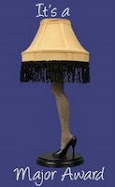A few weeks back I was out photographing one evening when, for no apparent reason. I fell over. It wasn't a faint, I just seemed to lose my balance and over I went. I was a bit shocked but otherwise unhurt and got up and carried on photographing. Well, it happened again a couple of times more during the next fortnight and so I toddled off to the doctor. I'm not impressed with my GP surgery at the best of times, I have to say, and unfortunately the locum I saw did nothing to enhance their reputation. I'm not sure if he had just read The Dummies Guide to Strokes but he seemed fixated on the idea of mini-strokes or TIAs and refused to be put off the theory irrespective of whatever I said. I was accordingly sent to the local hospital about a week later for tests. During this time, I wasn't allowed to drive so I paid vast fortunes to a licensed bandit in a cab and duly arrived for my appointment.
Arriving some 25 minutes early, I was seen immediately which is unheard of in the National Health Service. I surmised that this was a test and, if you didn't have a heart attack at such an event, then you were OK. As it happened, the consultant I saw was of foreign extraction and, whilst I have no problem whatsoever with this, it was quite apparent that English was not his first language. I went through what had happened (several times) and he eventually pronounced that there was no way that these could be mini-strokes. I had tried to explain that I had a lot of hearing problems lately and wondered whether there was something that might be affecting my balance but he either misheard or chose to ignore this. Anyway, next week I have to have 24 hour heart monitoring, followed by an echocardiogram and then 24 hour BP monitoring. I've only had a couple more episodes but spend quite a lot of my time feeling even more unbalanced than people already assume.
The reason I tell you all this is purely as a background. You see, I don't really go out much at the moment as a) I am a tad concerned that falling onto hard pavement might damage either me or, more importantly, my cameras, b) walking isn't overly pleasant currently and, c) Spring has decided to pass us by in favour of another ice age.
One day, shortly after all of the above happened, I was browsing through Flickr (online photo site) when I saw a photograph of a water droplet and was entranced. I had a beautiful new Canon 100mm L IS USM macro lens and tried a little experiment of putting a piece of wood over the kitchen sink and, on this, setting a roasting tray full of water. I set the tap to a very slow drip , focused the lens on the surface of the water and tried a few shots.
This was one of the very first efforts that day; crude but sufficiently intriguing to make me delve further. The blue is merely a folder, leaned against the tiles behind the sink with a flash directed onto it which then reflects the colour back into the water.
That evening I spent a long time researching the different ways and means of taking shots as well being blown away by some amazing images. The undoubted guru of water drop photography is a lady called Corrie White who has spent several years honing her craft and who now produces images such as these:
Truly beautiful and something to which I could hopefully aspire. In fact, there are many exponents of water drop photography out there and all have my admiration. After that first session, I just knew that this was for me and suddenly, my enforced incarceration didn't seem quite so bad.
The science of water drops is quite complicated in some ways. If you have ever seen a drop fall into liquid then you'll know that there is an opposite reaction insofar as the drop will effectively rebound up above the surface.To get an effect like the last of Corrie's 3 examples, you need to drop a second drop so that it collides with the first as it climbs up once more and it's this collision that can cause such amazing effects and is perhaps the starting point of many great shots.
OK, so there was my starting point. How did I cobble together a system which had the capacity to drop liquid at specific, regular intervals because, until I could sort that, I was leaving way too much to luck? Some people start with manual means such as an eye dropper but I wasn't sufficiently confident or steady-handed to go down that path. The obvious apparatus seemed to be an IV drip as that has the capacity to deliver regular drops and these could be made faster or slower in order to try and get the collisions to which I referred earlier. Oh, for the days when I knew lots of nurses socially as opposed to the professional contact I now seem to have; I'm sure an IV kit could have been liberated without much trouble at all. As it was, I found a supplier on the net and within a couple of days, I was the proud possessor of a couple of these babies:
Clumsy and crude, but it worked and my efforts started to look a bit better. I had realised that 2 flashes were ideal as a minimum and so I purchased a cheap wireless flash (YongNuo YN-560) to work with my Canon Speedlight and these were set, pointing at the background. Hopefully, my drawing skills give a rough idea of what I mean.











.jpg)

.jpg)

